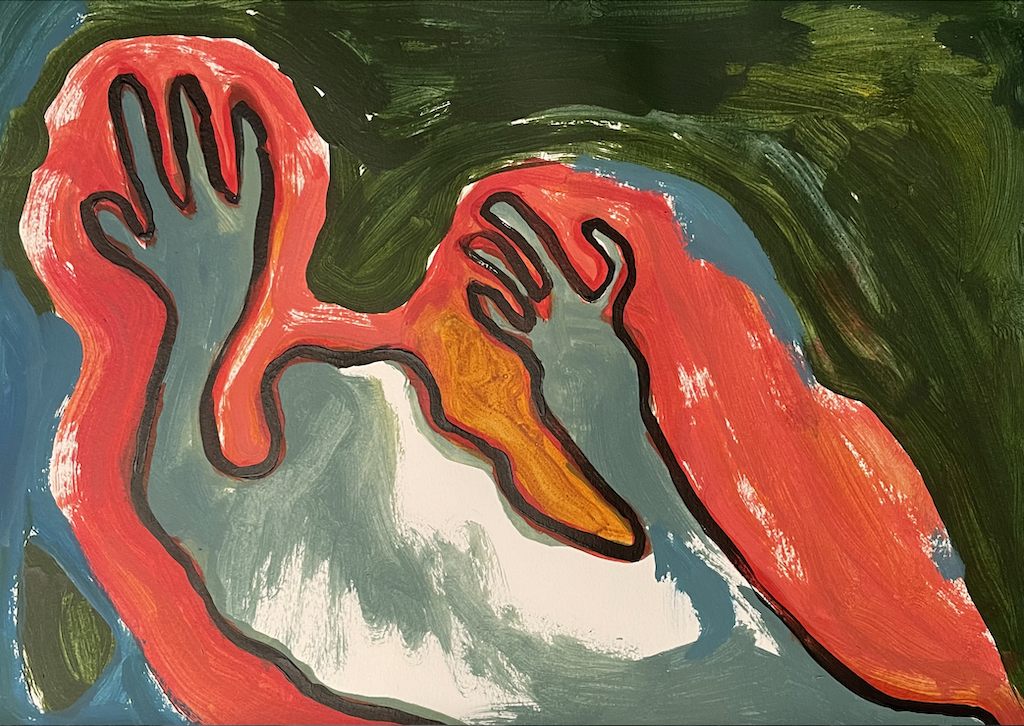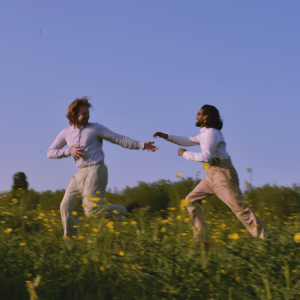
‘TEASING MEANING OUT OF THESE SILENCES’ ON SAPPHO AND THE READING OF FRAGMENTS
by Kyoka Hadano | January 24, 2022
We are strangely drawn to bits and pieces. The blunted shimmer of sea-glass, newspaper clippings, crumbling broken hazelnuts atop a cake. But what if we were thinking about fragmentary language? Words ending mid-sentence
] random indentation
grammar eluded
dissolve our expectations of lexical coherence. Teased out of the cohesion of sense and sentence, we find ourselves riddled with interruptions, lacunae, punctured openings, and unhemmed endings.
Sappho’s poetry is one of fragmentation. Intentional or not, her writings have remained with us in bits and pieces, preserved as citations in the works of other ancient authors or inscribed on strips of frayed papyri. Of the nine books of lyric poetry she is said to have composed, only one poem has reached us in its complete state. In the rare case that papyri do survive without significant damage, they still make for problematic reading: text is written upon them in columns, without word division, punctuation, or lineation. The very act of reading – even in this primary editorial phase – is one of piecing together the gaps.
This broken form chimes well with Sappho’s prevailing poetic theme of unrequited desire. The lover always yearns for what they do not have, and Sappho’s lyrical ‘I’ is no exception, for whom love unreciprocated is a condition predicated on absence. Having recently thumbed through the pages of the writer and classicist Anne Carson’s essay collection Eros the Bittersweet, I recall her observation that “[t]he Greek word ‘eros’ denotes ‘want,’ ‘lack,’ ‘desire for which is missing’”. Such is the condition of Sappho’s lyrics, which evoke love as a yearning for what is not there, absences brought into relief by scenic displacements. Carson’s interpretation of Sappho’s Greek is also an imagining of this distant realm:
I long and seek after (fr. 36)
Moon has set
And Pleiades huddle
Night, the hour goes by,
Alone I lie. (fr. 168B)
Reading her fragments this way is a process of re-composition – the absences of the text coax forward the presence of the reader. Punning on the gaps in the text of Sappho’s corpus, the scholar Yopie Prins proposes that “[r]eading Sappho is a form of riddling”. She suggests that “[w]hen we read the fragments, we ask a question about voice that we answer by projecting voice into the[m].” This question-and-answer movement of “projecting voice” suggests that reading is a sort of interiorised dialogue: a conversation with, and through, the text before us. The act of deciphering ‘Sappho’ from the crumbled array of words before us is a demand to make sense of characters on the page, to pay careful attention to calibrations of context and ornament. The intimacy of this process – of reading, of translating, of (re)composition – aligns the reader to the figure of the lover, as Carson writes:
Eros is always a story in which lover, beloved and the difference between them interact. The interaction is a fiction arranged by the mind of the lover. It carries an emotional charge both hateful and delicious, and emits a light like knowledge.[1]
This account could just as well be ascribed to the reader and editor of Sappho’s poetry, invited as we are to tease meaning out of these silences in her oeuvre. It is therefore through the act of readerly interpretation – of resting our fingertips along a poem’s ragged edges and contemplating that which may have been lost – that unlocks what Plato’s Socrates describes as the process of “heal[ing] the wound of human nature”[2]. Through literary love, lyric can be completed, an undeniable link between Sappho’s writing of desire and the readerly desire for ‘Sappho’ as poet.
In this way, she is the lyric poet of ‘eros’ par excellence, inviting, through a history of material loss, her readers into piecing back together the trailing lines. Consider fragment 21 (à la Carson):
]
]
]pity
]trembling
]
]flesh by now old age
]covers
]flies in pursuit
]
]noble
]taking
]sing to us
The one with violets in her lap
]mostly
]goes astray
Carson’s typographical choice of using squared brackets in translation indicates destroyed sections of the manuscripts, or unclear characters, “an aesthetic gesture towards the papyrological event”, in her own words. She thus encodes and accentuates the silences whorled in the fabric of the poems by weaving together a filigree of lovelorn asymmetries. The seventeenth-century writer George Puttenham described these purposeful gaps in rhetorical terms as “the figure of silence” or ‘aposiopesis’, the term for an abrupt breaking off in speech.[3] The gaps’ texture is akin to that of rest-signs in sheet music, or the pauses for effect given in an oratory speech.
But instead of visual prompts, we are looking at words, shimmering and inchoate, mediated by lexical deciphering and scholarly remediation. Amidst a poem peppered with these ambiguities, the only line in fragment 21 which survives in its entirety is an enigmatic reference to “the one with violets in her lap”. In the endnotes to the volume, Carson admits with readerly deference that “I do not know what this adjective means exactly”. The adjective (“ἰόκολπον” in Greek) is a compound word, from “ion”, meaning “violet” ( “purple” or “dark” or “like violets” are other options) and the word “kolpos”, for which Carson gives many possible meanings: “bosom, lap, womb, fold formed by a loose garment; any hollow.” Carson also notes that, in Sappho, the dusky purples of violets are “an epithet of brides and of a goddess” and this fact conjures in my mind other similar referents across her oeuvre. Is this reference to “violets” in fragment 21 the same as that of fragment 30: “girls […] might sing of the love between you and the bride / with violets in her lap” or of fragment 103: “]child of Kronos with violets in her lap”? Interweaving the images of “a child of Kronos”, jealous “anger” and “the bride”, I wonder whether Sappho is hinting Hera to us, wife of Zeus and the goddess of marriage. This could imply – I twirl my pen at my desk as I write this, quietly proud of my literary sleuth work – that some of these songs were ‘epithalamiums’, wedding poems.
There seems to be a sad irony in the idea of lovers twinned à deux, who are however – over the contingencies of time and history – torn away from one another, only to be pieced back together in the realms of ambiguous obscurity. For, after all, fragments are also ruins. They imply something left behind from what had once been a whole.
Yet such an interpretation – of course – is only in the realms of readerly conjecture. The nature of fragments, from an author no longer breathing and before us, diffracts and unlocks a plethora of potential meanings from a text. Where anyone can have their own unique reading of a text, sometimes necessarily mediated in translation, fragments create a conversation between ourselves and the forms the words cast before us. Through these intertwined threads of interpretation, reader and the lover together become “mythoplokon” (“weavers of fictions” (fragment 188)).
These fragmented translations of Sappho encode an admission of frailty – their very form is suggestive of the compositional process, the fraying away of words by time and memory, the incoherent passion of a lover’s confession, its flickering impressions. And yet, there is something in tears and aches that invites sympathy. The critic Virginia Jackson writes about how we define lyric poetry not in terms of fixed taxonomies, but as a way of reading or “lyricisation”.[4] Through the process of lyric reading, of pausing our fingertips upon a poetic fragment and slipping closed the knots of imperfection, we can tend to these poetic wounds and re-calibrate our understanding of the broken condition as something in fact complete. ∎
[1] Carson, Eros the Bittersweet, p. 169.
[2] Plato, ‘Symposium’, in Lysis. Symposium. Gorgias, trans. by W.R. M. Lamb (Cambridge: MA: Harvard University Press, 1925),192e (pp. 144-5).
[3] George Puttenham, The Arte of English Poesie (London: Triphook, 1811), p. 139.
[4] Virginia Jackson, Dickinson’s Misery (Princeton, NJ: Princeton University Press, 2005), p. 6.
Words by Kyoka Hadano. Art by Millie Dean-Lewis.




